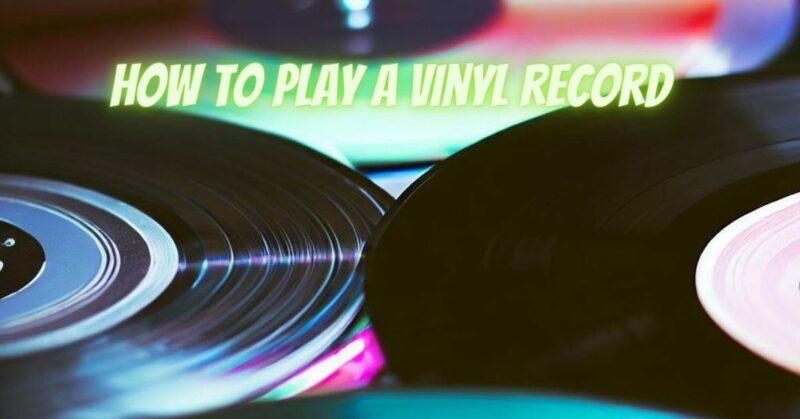Playing vinyl records is a rewarding and immersive experience that allows you to enjoy the unique sound and nostalgia of analog music. Whether you’re new to vinyl or a seasoned enthusiast, knowing how to play a vinyl record correctly is crucial for optimal sound quality and to prevent damage. In this article, we will guide you through the step-by-step process of playing a vinyl record.
Step 1: Prepare Your Turntable and Set-Up:
a. Place your turntable on a stable surface, away from sources of vibration or excessive movement.
b. Ensure your turntable is properly leveled using a spirit level. Adjust the turntable’s feet or use leveling mats as needed.
c. Set the tracking force and anti-skate settings according to the manufacturer’s instructions for your specific turntable model. These settings ensure proper stylus pressure and alignment for accurate tracking.
Step 2: Select the Vinyl Record:
a. Choose the vinyl record you wish to play from your collection. Ensure it is clean and free from visible dirt, dust, or debris.
b. Remove the record from its protective outer sleeve and inner sleeve. Hold the record by the edges to avoid touching the playing surface.
Step 3: Set Up the Record on the Turntable:
a. Locate the spindle or center hole on the turntable platter. Align the center hole of the record with the spindle.
b. Gently place the record onto the turntable, ensuring it sits flat and centered on the platter.
c. If necessary, use a record clamp or stabilizer to hold the record in place during playback.
Step 4: Cueing and Lowering the Tonearm:
a. Locate the tonearm on your turntable. The tonearm houses the stylus or needle.
b. Slowly lift the tonearm cueing lever or lift mechanism, which raises the tonearm from its resting position.
c. Position the stylus above the desired track on the record, being careful not to touch the record surface or stylus.
d. Carefully lower the tonearm onto the record by gently releasing the cueing lever or lift mechanism. Ensure the stylus makes contact with the record’s outer grooves.
Step 5: Playback and Monitoring:
a. Ensure your audio system is connected to your turntable and powered on.
b. Set the appropriate input source on your amplifier or receiver for the turntable.
c. Start the turntable’s motor or initiate the playback function, depending on your turntable’s design.
d. Adjust the volume on your amplifier or receiver to a comfortable listening level.
e. Sit back, relax, and enjoy the music as it plays through your speakers or headphones.
Step 6: After Playback:
a. Once the record finishes playing, gently lift the tonearm from the record using the cueing lever or lift mechanism.
b. Return the tonearm to its resting position and secure it in place.
c. Carefully remove the record from the turntable, holding it by the edges, and place it back in its protective sleeves.
Conclusion:
Playing a vinyl record involves careful preparation, proper set-up of your turntable, and handling the record with care. By following this step-by-step guide, you can ensure a smooth and enjoyable vinyl listening experience. Remember to handle records by the edges, maintain a clean and level turntable, and properly cue and lower the tonearm onto the record. With attention to detail and proper technique, you can immerse yourself in the unique sound and magic of vinyl music.


